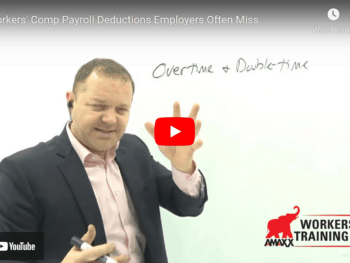Here’s what happened
Employer’s Zero-Tolerance Policy for Major Preventable Accidents Trumps Driver’s Retaliatory Discharge Claim. A 60-year-old truck driver was injured when two worn straps used to secure the heavy load on his truck snapped. The resulting shift of cargo caused extensive damage to the truck as well. The driver was fired shortly after filing his application for workers’ compensation benefits. He then filed suit against the employer in federal court, alleging that the employer had discriminated against him on the basis of age, disability, and his application for workers’ compensation benefits, all in violation of California’s Fair Employment and Housing Act (FEHA). He also asserted that his employment was terminated in violation of public policy, and that the employer breached the implied covenant of good faith and fair dealing and intentionally or negligently caused him to suffer emotional distress. The employer contended the driver had been fired on the basis of the employer’s “zero tolerance” policy for major preventable accidents.
Here’s how the court ruled
In Copeland v. Ryder Servs. Corp., 2009 U.S. App. LEXIS 5607 (9th Cir., March 18, 2009), the U.S. Court of Appeals for the Ninth Circuit affirmed an order of a California district court granting summary judgment to the employer. The driver’s evidence that he suffered from disabling injuries, was 60 years old, was called “the old guy” by his coworkers, and heard a stray remark about retirement during the accident review board hearing only minimally pointed to discrimination. The statements regarding the driver’s workers’ compensation claim were isolated comments unrelated to the employer’s decision to terminate the driver’s employment. Weighing against the driver’s evidence was an earlier accident after which the driver had been warned about the importance of securing his cargo, the employer’s consistent application of its zero tolerance policy for major preventable accidents, and the reasonable conclusions by the safety manager and the accident review board that the billets on the trucker’s vehicle were not adequately secured. All in all, the court held there was insufficient evidence from which a fact finder could conclude that the driver’s termination was motivated by age or disability discrimination or by his application for workers’ compensation.
See generally Larson’s Workers’ Compensation Law SECTION 104.07.
_____________________________________________________________________________________
Tom Robinson, J.D. is the primary upkeep writer for Larson’s Workers’ Compensation Law (LexisNexis) and Larson’s Workers’ Compensation, Desk Edition (LexisNexis). He is a contributing writer for California Compensation Cases (LexisNexis) and Benefits Review Board – Longshore Reporter(LexisNexis), and is a contributing author to New York Workers’ Compensation Handbook(LexisNexis). Attorney Robinson is an authority in the area of workers’ compensation and we are happy to have him as a Guest Contributor to Workers’ Comp Kit Blog. Tom can be reached at: compwriter@gmail.com.
http://law.lexisnexis.com/practiceareas/Workers-Compensation
_____________________________________________________________________________
WC Cost Calculator to show the REAL COST of workers www.ReduceYourWorkersComp.com/calculator.php
WC 101 for the basics about workers comp. www.ReduceYourWorkersComp.com/workers_comp.php
Do not use this information without independent verification. All state laws are different. Consult with your corporate legal counsel before implementing any cost containment programs.
©2008 Amaxx Risk Solutions, Inc. All rights reserved under International Copyright Law. If you would like permission to reprint this material, contact Info@WorkersCompKit.com













